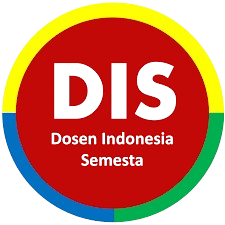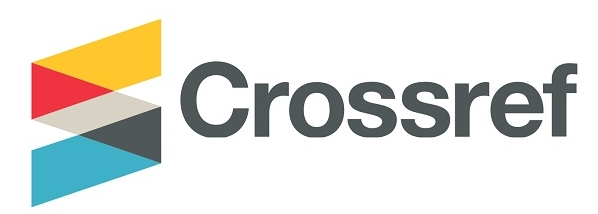IMPROVING VOCABULARY MASTERY BY USING MULTISENSORY METHOD FOR DYSLEXIC STUDENTS IN THE FOURTH GRADE AT BIANGLALA HOME SCHOOLING BANYUWANGI
DOI:
https://doi.org/10.36526/ln.v7i2.3160Keywords:
Vocabulary Mastery; Multisensory Method; Dyslexic GradersAbstract
The goal of the research was how a multisensory method assisted dyslexic graders increase their vocabulary mastery. The low of vocabulary scores of preliminary study obtained by dyslexic students. It encouraged this research. This research was conducted at Bianglala homeschooling Banyuwangi. There were two cycles to this Classroom Action Research. Three meeting in cycle 1, and two meeting in cycle 2. Three dyslexic students were the subjects of this research. The data was collected through a vocabulary test in multiple choice form. The test consist of 10 items of abstract noun and concrete noun. The results showed that the students’ test scores in cycles I and II increased significantly. The students’ achievement in cycle I was 66.6% who achieved the minimum criterion, but in cycle II, it increased to 100% who passed the minimum criterion. In addition, the minimum score was reached. From cycle I to cycle II, students’ vocabulary increased. The students’ vocabulary mastery improved from cycle I to cycle II, according to the findings. It may be concluded that using the Multisensory Method can assist dyslexic students enhance their vocabulary mastery.
References
Evaluasi Kinerja Karyawan Rumah Sakit Umum Pemerintah Dengan Metode The Malcom Baldrige National Quality Award (MBNQA). Jurnal Ilmiah Ilmu Komputer, 6 (3), 108-118.
Cameron, Lynne. (2005). Teaching Languages to Young Learners. New York: Cambridge University Press. Davies, et al. (2000). Success in English Teaching. New York: Oxford University Press.
Depdiknas. Undang-Undang Nomor 20 Tahun 2003 tentang Sistem Pendidikan Nasional (2003). Jakarta
Eryani, M. Thamrin, and Yuniarni, D. (2017). Meningkatkan Kosa Kata Bahasa Inggris Anak Usia Dini Melaui Total Physical Response. Jurnal Pendidikan dan Pembelajaran Khatulistiwa, Vol. 6, No. 2.
Gilakjani, A. P. (2012). Visual, Auditory, Kinaesthetic Learning Styles and Their Impacts on English Language Teaching. Journal of Studies in Education, Vol. 2, No. 1.
Habsah, A. (2012). Peningkatan Kemampuan Berbicara melalui Pendekatan Multi Sensori dengan Media Power Point pada Anak Tunarungu Kelas V di SLB Budi Bhakti II kawali Kabupaten Ciamis. Thesis. Not Published. Ilmu Komunikasi. Bandung: UPI.
Herr, G. Anderson, and Kathryn G. (2005). The Action Research Dissertation: A Guide for Students and Faculty. Political Science.
Huddleston, R. (1984). Introduction to the Grammar of English. Cambridge University Press.
Igaab, Z. K. and Rahman, I. (2010). Pronouns in English and Arabic: A Contrastive Study. doi:10.5539/ells.v9n1p53 URL: https://doi.org/10.5539/ells.v9n1p53.
Kemmis, S. and McTaggart, R. (1988). The Action Researh Reader. Victoria, Deakin University Press. DOI:10.4135/9781452226644. Available at : http://www.stanys.org/RT/Action%20Research%20Spiral.pdf.
Kinesthetic-Tactile Activities, to Enhance Spelling Accuracy of Second Grade Students. Journal of Education & Social Policy, Vol. 2, No. 1.
Layton, T. L, et al. (2000). Handbook Of Early Language Impairment in Children: Nature, Canada.
Margaret, J. Snowling, Hulme, C. & Nation, K. (2020). Defining and understanding dyslexia: past, present and future, Oxford Review of Education Journal,Vol.
46, No. 4, pp. 501-513, doi: https://doi.org/10.1080/03054985.2020.1765756.
Milford, A. (2010). Grammar Springboard. Hopscotch Educational Publishing. P. 14. ISBN-10 1905390769.
Mitchel, A. D. and Weiss, J. (2011). Learning across Senses: Cross-Modal Effects in Multisensory Statistical Learning. Journal of Experimental Psychology: Learning, Memory, and Cognition, 37 (5), 1081.
Nofriani, R. (2018). The Error Analysis of Plural Form Of Nouns Made By The Eighth Grade Students At State Junior High School 6 Muara Bungo. Thesis. Not Published. Faculty of Education and Teacher Training. Jambi : The State Islamic University Sulthan Thaha Saifuddin.
Obaid, M. A. (2013). The Impact of Using Multi-Sensory Approach for Teaching Students with Learning Disabilities. Journal of International Education Research, Vol. 9, No. 1.
Padurean, A. N. (2014). Teaching English Language to Children with Special Educational Needs. TEM Journal, Vol. 3, No, 4.
Prawoto, A. J. (2016). A Descriptive Study on Students’ Mastery in Using Conjunction of the Fourth Semester Students of English Education of IAIN Surakarta in the Academic Year of 2015/2016. Thesis. Not Published. English Education. Surakarta: IAIN Surakarta University.
Purkayastha, S., Nehete, N. and Purkayastha, J. (2012). Discover—An Orton-
Gillingham Approach Inspired Multi-Sensory Learning Application for Dyslexic Children. World Congress on Information and Communication Technologies, pp. 685-690.
Purwanto, N. (2014). Ilmu Pendidikan Teoretis. PT Remaja Rosdakarya Offset. Bandung.
Rahman, A. A. and Angraeni, A. (2020). Empowering Learners with Role-Playing Game for Vocabulary Mastery. International Journal of Learning, Teaching and Educational Research, 19 (1).
Reed, M. A. (2009). Children and Language, New York: Nova Science Publisher. ISBN: 978-60741-680-7.
Rusmidah, Suhartono, K. (2013). Penggunaan Model Word Square Dalam Peningkatan Penguasaan Kosakata Bahasa Inggris Siswa Kelas IV SDN Mangunranan. Surakarta: Universitas Sebelas Maret. Available at : http://download.portalgarudaorg/article.php?article=108470&val=4073.
Bull, P. (2006). Testing Hypotheses on Specific Environmental Causal Effects on Behavior, pp 291-324.
Schunk, D. H. et al. (2012). Motivasi dalam Pendidikan: Teori, Penelitian dan Aplikasi. Indeks. Jakarta.
Sessiani, L.A. (2007). Pengaruh Metode Multisensori dalam Meningkatkan Kemampuan Membaca Permulaan pada Anak Taman Kanak-kanak (Studi Eksperimental di TK ABA 52 Semarang). Thesis. Not Published. Fakultas Psikologi. Semarang: Universitas Diponegoro.
Suryaningsih. (2016). English Book Side A. p. 1. ISBN: 978-602-371-326-4.
Suyanto, Kasihani K. E. (2015). English For Young Learners: Melejitkan Potensi Anak Melalui English Class yang Fun, Asyik, dan Menarik. Jakarta: Bumi Aksara.
Syarif, A. (2011). An Analysis of Students’ Errors in Using Adjective Clauses. Journal. UINSyarifHidayatullah,ac.id.
Tatman, P. (2005). Youth and Dyslexia. Department of Family and Consumer Sciences, University of Wyoming.
Ulya, Z. (2016). Penerapan Model Pembelajaran Saintifik untuk Meningkatkan Aktivitas dan Hasil Belajar Bahasa Inggris Topik Prosedur Teks Kelas IX SMP. Jurnal Konselingdan Pendidikan, Vol. 4, No.3, pp. 52-61.
Weaver, C. (1979). Grammar for Teachers: Perspectives and Definitions. National Council of Teachers of English, Urbana.
Wijaya, D. and Ong, G. (2018). Applying Cognitive Linguistics to Teaching Prepositions in The EFL Classroom. Indonesian Journal of Applied
Linguistics, 8(1), 1-10.
Yulia, Emidar, Ena. (2013). Peningkatan Penguasaan Kosakata Melalui Teknik Permainan Teka-teki Silang di Kelas Vila SMPN 2 Sungai Penuh. Padang:Universitas Negeri Padang. Available at : http://download.portalgaruda.org/article.php?Article=101577&val=1517.).
Yuniarty, N. (2018). Interjection in Student Conversation. Jurnal Penelitian dan Pengembangan Ilmu Administrasi dan Humaniora, 8 (1), 63-72.
Downloads
Published
How to Cite
Issue
Section
License
This work is licensed under a Creative Commons Attribution-ShareAlike 4.0 International License.


















